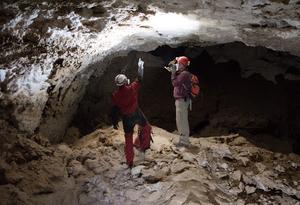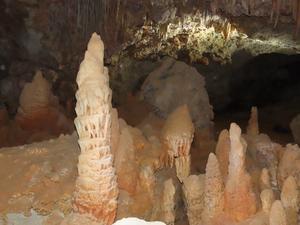Overview
- Speleothem records from seven Saudi Arabian caves document multiple humid phases over the past 8 million years, challenging the notion of consistent hyperaridity in the region.
- These wet intervals supported lush landscapes and facilitated mammalian and early human migrations between Africa and Eurasia, positioning Arabia as a vital biogeographic crossroads.
- Isotopic analysis reveals a shift in rainfall patterns, with older humid periods driven by southern monsoonal rains and more recent ones influenced by Mediterranean winter storms.
- The Arabian Peninsula's progressive aridification aligns with global cooling events and the growth of polar ice sheets, which displaced monsoonal rain belts southward over time.
- Advanced dating techniques, including uranium-thorium and uranium-lead methods, provided precise timelines for these humid phases, offering new insights into the region's climatic history.



